Model and Experimental Study on Optical Fiber CT Based on Terfenol-D
Abstract
1. Introduction
2. Structure and Working Principle of Current Transformer Based on Terfenol-D
3. Model of Current Transformer
3.1. Multi Field Coupling Characteristics of Terfenol-D Materials
3.2. Principle of Dynamic Strain Demodulation of FBG
4. Experimental Results and Analysis
- (1)
- Determine the model parameters, set the prestress and temperature and set the simulation time and sampling period , then the maximum simulation times is , At first we made ;
- (2)
- Solve Equations (3)–(6) using the Euler method and Newton iteration method, then the magnetization at time could be obtained;
- (3)
- Solving magnetostriction at time according to the relationship between and , i.e., Equation (5);
- (4)
- Solving FBG center wavelength variation at time according to Equation (9);
- (5)
- Solving the phase difference of an unbalanced M–Z interferometer at time according to Equation (12);
- (6)
- , if , return to step (2), otherwise end.
4.1. Experimental Results and Analysis of Multi Field Coupling Characteristics of the Terfenol-D Material
4.2. Experimental Results and Analysis of Optical Current Transformer Based on the Terfenol-D Material
5. Conclusions
Author Contributions
Funding
Acknowledgments
Conflicts of Interest
References
- Sasaki, K.I.; Takahashi, M.; Hirata, Y. Temperature-Insensitive Sagnac-Type Optical Current Transformer. J. Lightwave Technol. 2015, 33, 2463–2467. [Google Scholar] [CrossRef]
- Miyamoto, M.; Kubo, T.; Fujishiro, Y.; Shiota, K.; Sonehara, M.; Sato, T. Fabrication of Ferromagnetic Co–MgF2 Granular Film With High Transmittance and Large Faraday Effect for Optical Magnetic Field Sensor. IEEE Trans. Magn. 2018, 54, 1–5. [Google Scholar] [CrossRef]
- Gerber, D.; Biela, J. High-dynamic and high-precise optical current measurement system based on the Faraday effect. IEEE Trans. Plasma Sci. 2015, 43, 3550–3555. [Google Scholar] [CrossRef]
- Bohnert, K.; Frank, A.; Yang, L.; Gu, X.; Müller, G.M. Polarimetric Fiber-Optic Current Sensor With Integrated-Optic Polarization Splitter. J. Lightwave Technol. 2019, 37, 3672–3678. [Google Scholar] [CrossRef]
- Kumar, G.; Mahajan, S.M. Wavelength dispersion of Verdet constant in E-field oriented iron oxide doped polymer nanocomposites. In Proceedings of the 2013 IEEE SENSORS, Baltimore, MD, USA, 3–6 November 2013; pp. 1–3. [Google Scholar]
- Xu, Z.; Xu, Q.; Chen, X.; Huang, Y. A Linear Optical Current Transducer Based on Crystal Wedge Imaging Detection. IEEE Sensors J. 2017, 17, 7894–7900. [Google Scholar] [CrossRef]
- Li, C. Magnetooptic Sensor Based on Electrogyration Compensation for Faraday Effect in Lead Molybdate Crystal. IEEE Sensors J. 2016, 16, 2982–2987. [Google Scholar] [CrossRef]
- Li, C.; Cui, H.; Zhang, X. Optical Magnetic Field Sensor Based on Electrogyratory and Electrooptic Compensation in Single Quartz Crystal. IEEE Sensors J. 2017, 18, 1427–1434. [Google Scholar] [CrossRef]
- Müller, G.M.; Frank, A.; Yang, L.; Gu, X.; Bohnert, K. Temperature Compensation of Interferometric and Polarimetric Fiber-Optic Current Sensors With Spun Highly Birefringent Fiber. J. Lightwave Technol. 2019, 37, 4507–4513. [Google Scholar] [CrossRef]
- Tan, Q.; Xu, Q.; Xie, N.; Li, C. An Optical Current Sensor Based on Radial Grating-Polarizer Detection. IEEE Sensors J. 2016, 16, 5927–5933. [Google Scholar] [CrossRef]
- Lenner, M.; Quan, W.; Müller, G.; Yang, L.; Frank, A.; Bohnert, K. Interferometric fiber-optic current sensor with inherent source wavelength shift compensation. In Proceedings of the 2015 IEEE SENSORS, Busan, South Korea, 1–4 November 2015; pp. 1–4. [Google Scholar]
- Lei, X.Q.; Peng, B.J.; Chen, D.R.; Shi, Q.G.; Ma, X.W. An All-Fiber Magnetic Field Sensor Based on Dual-S-Shaped Optic Fiber Integrated With Magnetic Fluid. IEEE Sensors J. 2015, 16, 958–964. [Google Scholar] [CrossRef]
- Shi, F.; Bai, X.; Wang, F.; Pang, F.; Pu, S.; Zeng, X. All-Fiber Magnetic Field Sensor Based on Hollow Optical Fiber and Magnetic Fluid. IEEE Sensors J. 2016, 17, 619–622. [Google Scholar] [CrossRef]
- Wang, Q.; Liu, X.; Xia, J.; Zhao, Y. A Novel Long-Tail Fiber Current Sensor Based on Fiber Loop Ring-Down Spectroscopy and Fabry-Perot Cavity Filled with Magnetic Fluid. IEEE Trans. Instrum. Meas. 2015, 64, 2005–2011. [Google Scholar] [CrossRef]
- Bai, X.; Yuan, J.; Gu, J.; Wang, S.; Zhao, Y.; Pu, S.; Zeng, X. Magnetic Field Sensor Using Fiber Ring Cavity Laser Based on Magnetic Fluid. IEEE Photonics Technol. Lett. 2016, 28, 115–118. [Google Scholar] [CrossRef]
- Dante, A.; Lopez, J.D.; Carvalho, C.C.; Allil, R.C.D.S.B.; Werneck, M.M. A Compact FBG-Based Magnetostrictive Optical Current Sensor With Reduced Mass of Terfenol-D. IEEE Photonics Technol. Lett. 2019, 31, 1461–1464. [Google Scholar] [CrossRef]
- Han, J.; Hu, H.; Wang, H.; Zhang, B.; Song, X.; Ding, Z.; Zhang, X.; Liu, T. Temperature-Compensated Magnetostrictive Current Sensor Based on the Configuration of Dual Fiber Bragg Gratings. J. Lightwave Technol. 2017, 35, 4910–4915. [Google Scholar] [CrossRef]
- Karanja, J.M.; Dai, Y.; Zhou, X.; Liu, B.; Yang, M.; Dai, J. Femtosecond Laser Ablated FBG Multitrenches for Magnetic Field Sensor Application. IEEE Photonics Technol. Lett. 2015, 27, 1717–1720. [Google Scholar] [CrossRef]
- Fusiek, G.; Niewczas, P.; McDonald, J.R. Feasibility study of the application of optical voltage and current sensors and an arrayed waveguide grating for aero-electrical systems. Sens. Actuators A Physical 2008, 147, 177–182. [Google Scholar] [CrossRef]
- Lopez, J.D.; Dante, A.; Cremonezi, A.O.; Ferreira, E.C.; Salles, B.R.; Gomes, A.M. A Fiber-optic Current Sensor Based on FBG and Terfenol-D with Magnetic Flux Density Concentration. In Proceedings of the 2019 IEEE SENSORS, Montreal, QC, Canada, 27–30 October 2019; pp. 1–4. [Google Scholar]
- Lopez, J.D.; Dante, A.; Bacurau, R.M.; Cremonezi, A.O.; Mok, R.W.; Carvalho, C.C. Fiber-Optic Current Sensor Based on FBG and Optimized Magnetostrictive Composite. IEEE Photonics Technol. Lett. 2019, 31, 1987–1990. [Google Scholar] [CrossRef]
- Kaplan, N.; Jasenek, J.; Červeňová, J.; Ušáková, M. Magnetic Optical FBG Sensors Using Optical Frequency-Domain Reflectometry. IEEE Trans. Magn. 2019, 55, 1–4. [Google Scholar] [CrossRef]
- Lopez, J.D.; Dante, A.; Cremonezi, A.O.; Bacurau, R.M.; Carvalho, C.C.; Allil, R.C. Fiber-Optic Current Sensor Based on FBG and Terfenol-D With Magnetic Flux Concentration for Enhanced Sensitivity and Linearity. IEEE Sens. J. 2020, 20, 3572–3578. [Google Scholar] [CrossRef]
- Wang, L. Theoretical and Experimental Studies of Current Sensing Based on Giant Magnetostrictive Materials and Fiber Grating. Ph.D. Thesis, Hebei University of Technology, Tianjin, China, 2012. [Google Scholar]
- Wang, L.; Wang, B.W.; Wang, Z.H.; Weng, L.; Huang, W.M.; Zhou, Y. Magnetothermo-mechanical characterization of giant magneto- strictive materials. Rare Met. 2013, 32, 486–489. [Google Scholar] [CrossRef]
- Jiles, D.C. Introduction to Magnetism and Magnetic Materials; CRC Press: Boca Raton, FL, USA, 2015. [Google Scholar]
- Jin, K.; Kou, Y.; Zheng, X.J. A nonlinear magneto-thermo-elastic coupled hysteretic constitutive model for magnetostrictive alloys. J. Magn. Magn. Mater. 2012, 324, 1954–1961. [Google Scholar] [CrossRef]
- Sablik, M.J.; Jiles, D.C. Modeling the effects of torsional stress on hysteretic magnetization. IEEE Trans. Magn. 1999, 35, 498–504. [Google Scholar] [CrossRef]
- Rao, Y.J. In-fibre Bragg grating sensors. Meas. Sci. Tech. 1997, 8, 355–375. [Google Scholar] [CrossRef]
- Todd, M.D.; Seaver, M.; Bucholtz, F. Improved, operationally passive interferometric demodulation method using 3 × 3 couper. Elec. Lett. 2002, 38, 784–786. [Google Scholar] [CrossRef]
- Cao, S.Y.; Wang, B.W.; Yan, R.G.; Huang, W.M.; Weng, L. Dynamic model with hysteretic nonlinearity for a giant magneto- strictive actuator. Proc. CSEE 2003, 23, 145–149. [Google Scholar]
- He, Z.; Xia, K.; Niu, W.; Aslam, N.; Hou, J. Semisupervised SVM Based on Cuckoo Search Algorithm and Its Application. Math. Prob. Eng. 2018, 2018. [Google Scholar] [CrossRef]
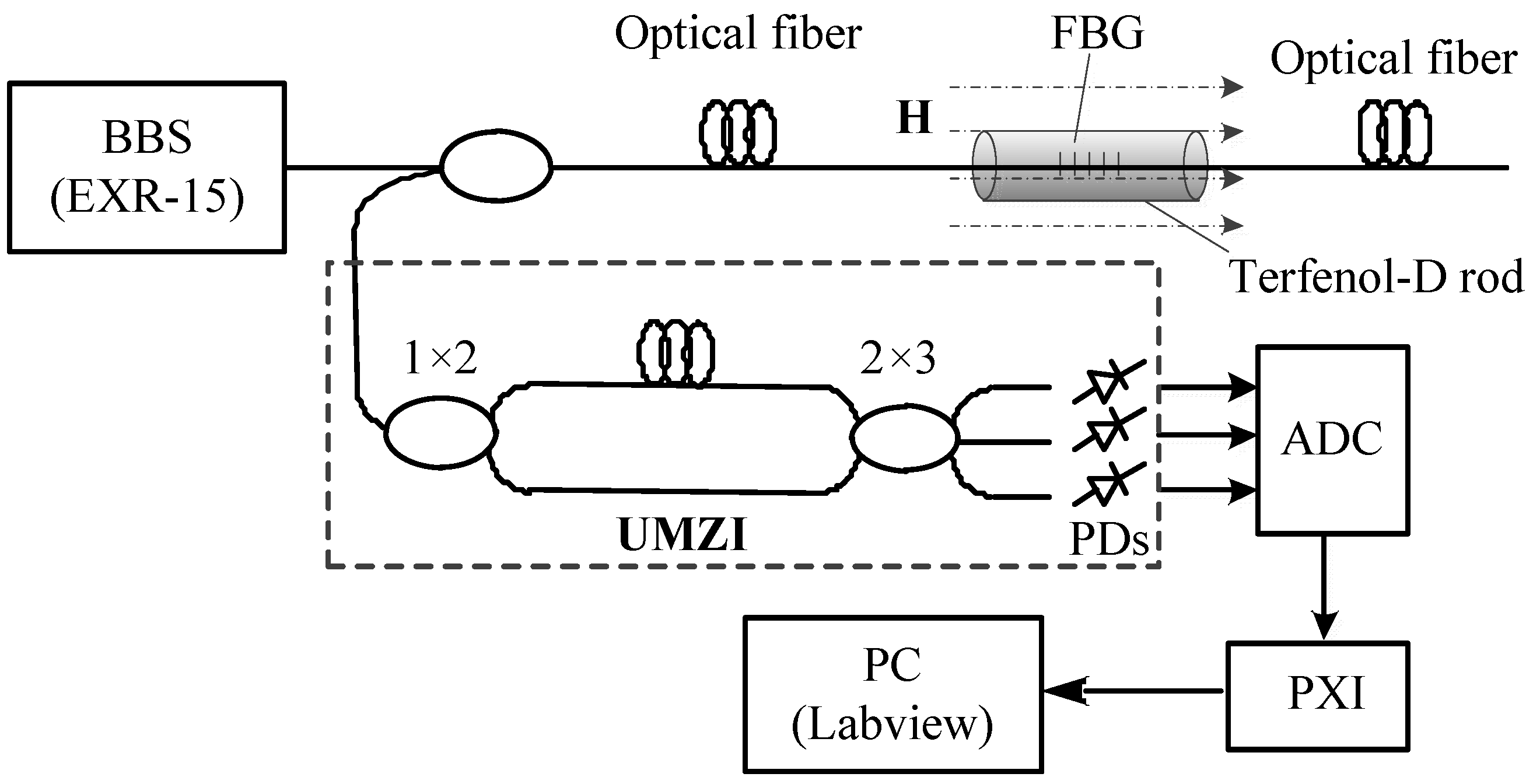
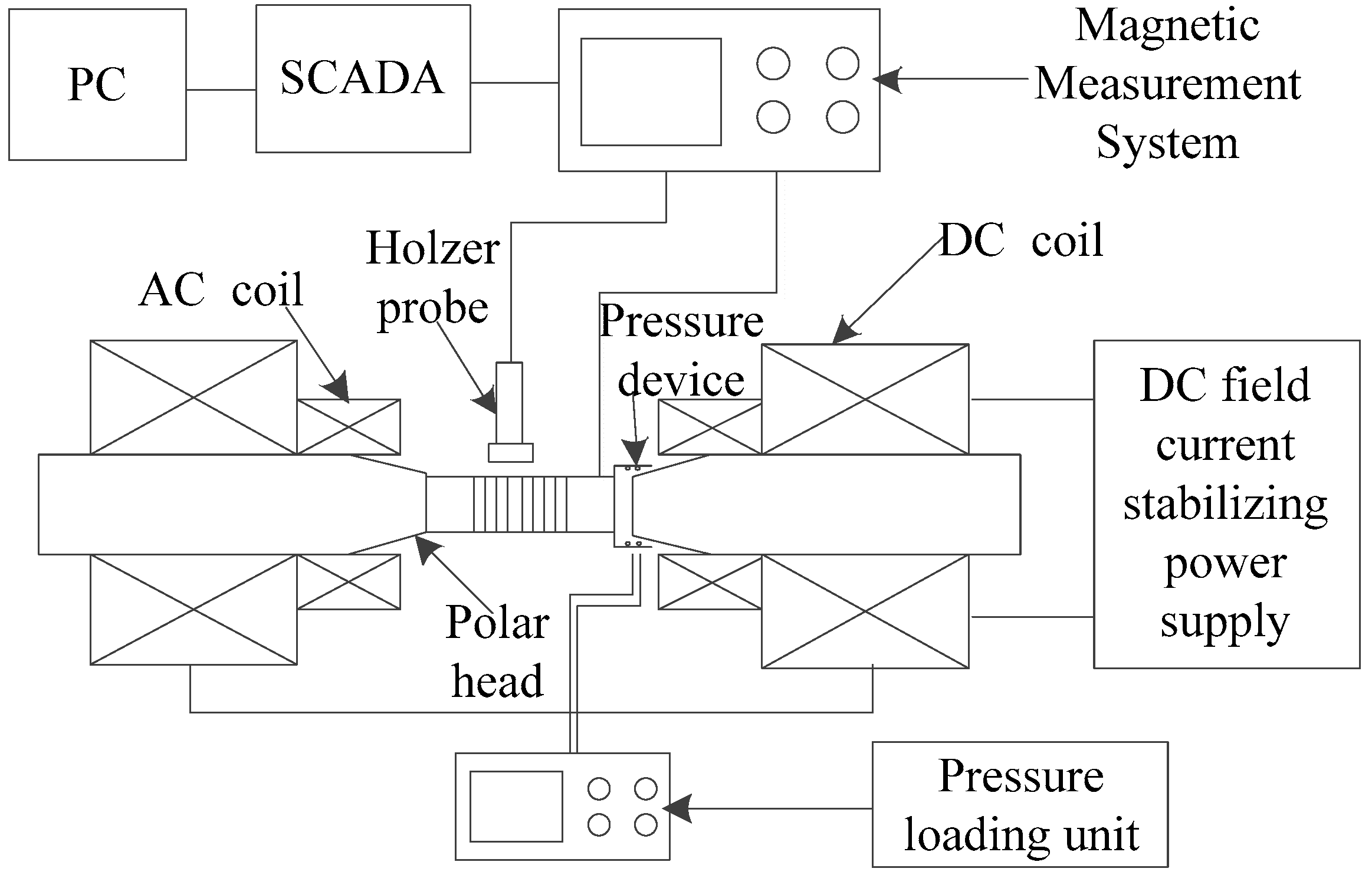
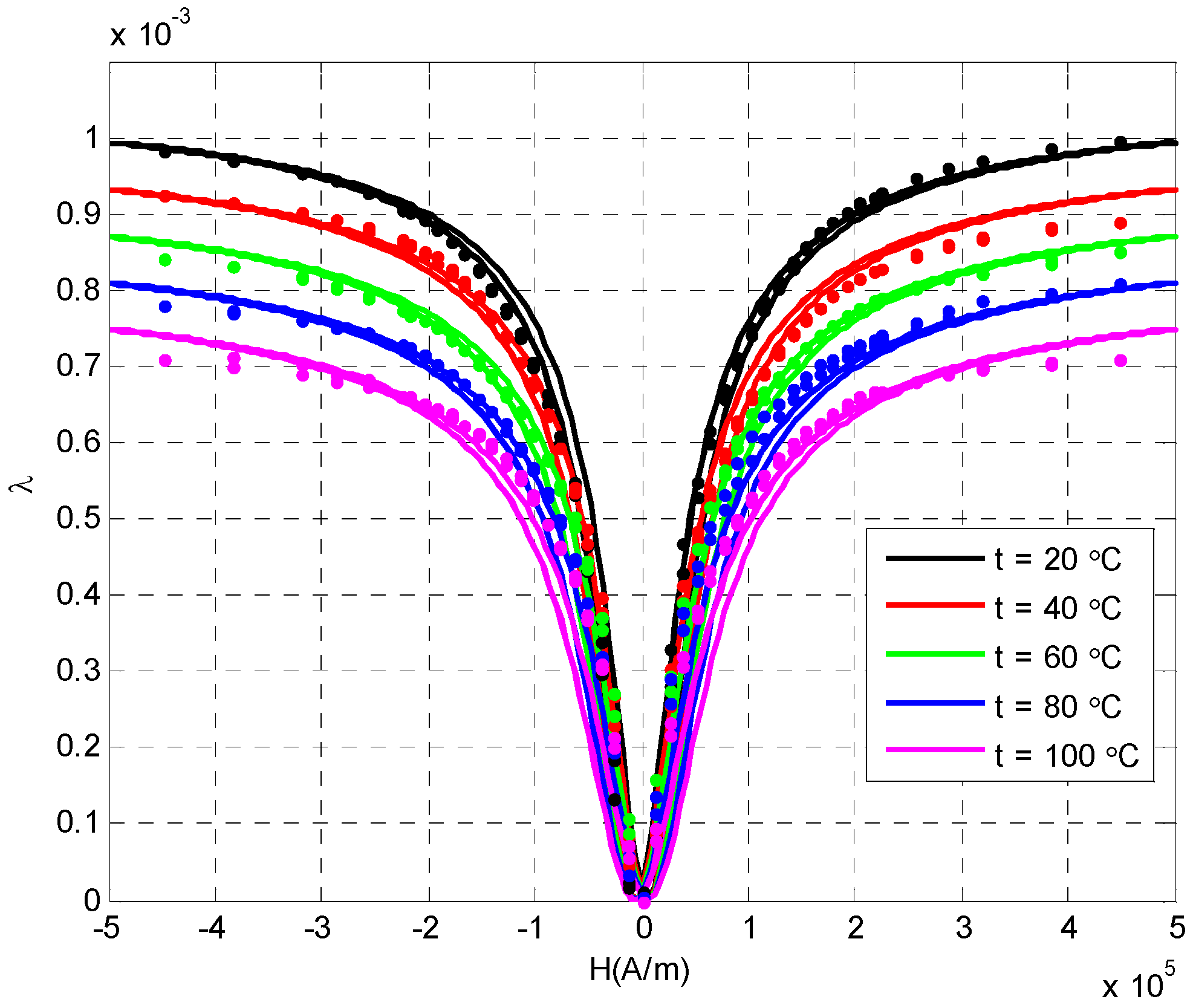
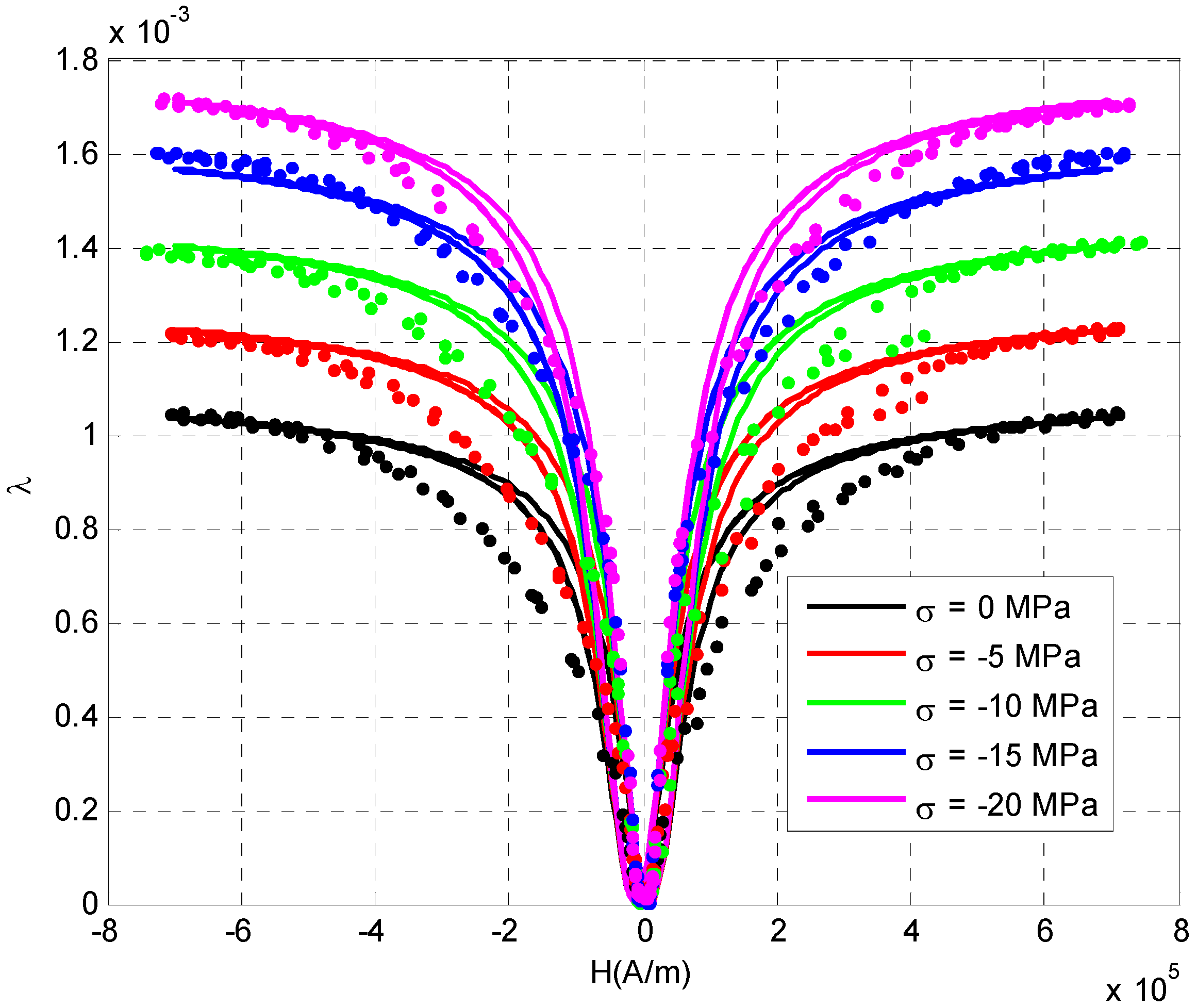
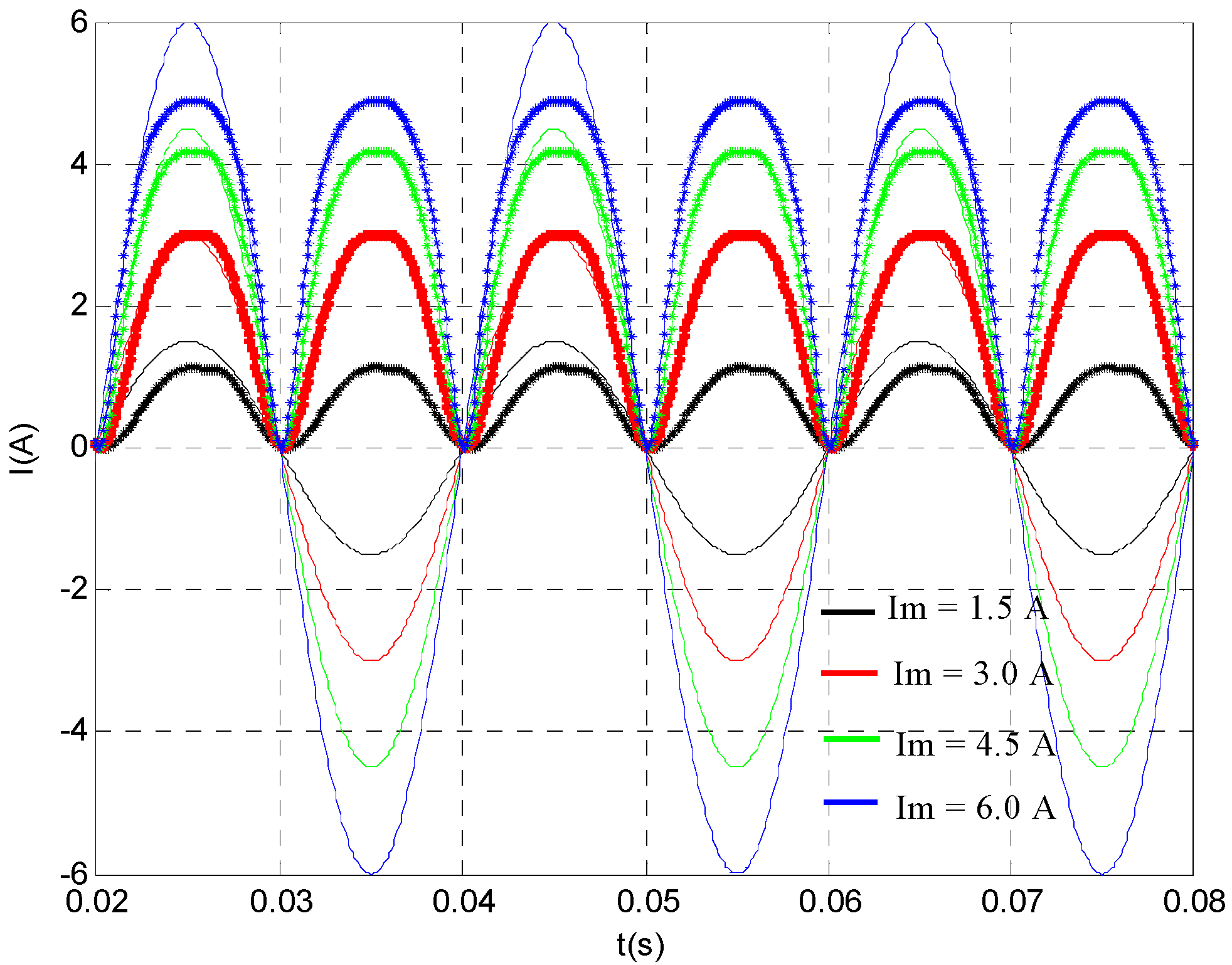
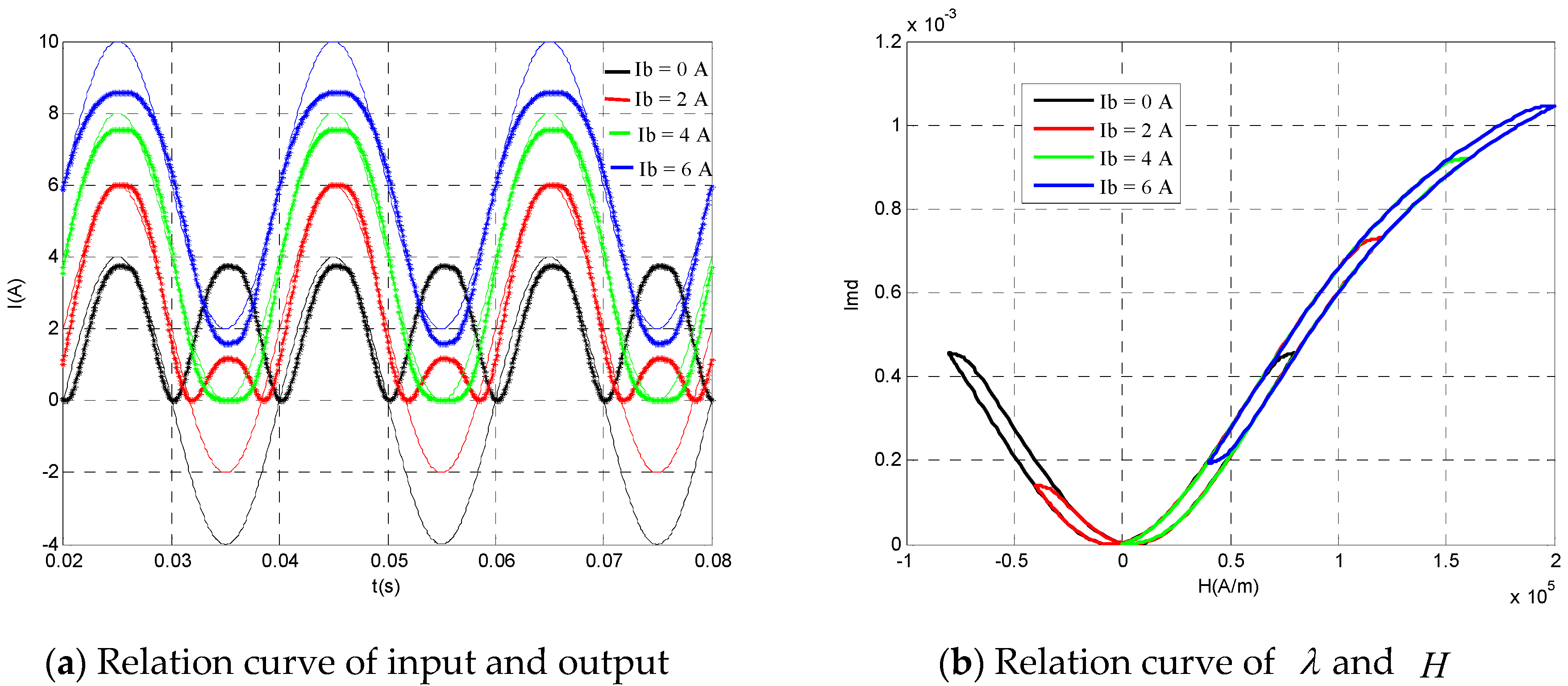

© 2020 by the authors. Licensee MDPI, Basel, Switzerland. This article is an open access article distributed under the terms and conditions of the Creative Commons Attribution (CC BY) license (http://creativecommons.org/licenses/by/4.0/).
Share and Cite
Li, W.; Kewen, X.; Ling, W. Model and Experimental Study on Optical Fiber CT Based on Terfenol-D. Sensors 2020, 20, 2255. https://doi.org/10.3390/s20082255
Li W, Kewen X, Ling W. Model and Experimental Study on Optical Fiber CT Based on Terfenol-D. Sensors. 2020; 20(8):2255. https://doi.org/10.3390/s20082255
Chicago/Turabian StyleLi, Wang, Xia Kewen, and Weng Ling. 2020. "Model and Experimental Study on Optical Fiber CT Based on Terfenol-D" Sensors 20, no. 8: 2255. https://doi.org/10.3390/s20082255
APA StyleLi, W., Kewen, X., & Ling, W. (2020). Model and Experimental Study on Optical Fiber CT Based on Terfenol-D. Sensors, 20(8), 2255. https://doi.org/10.3390/s20082255




